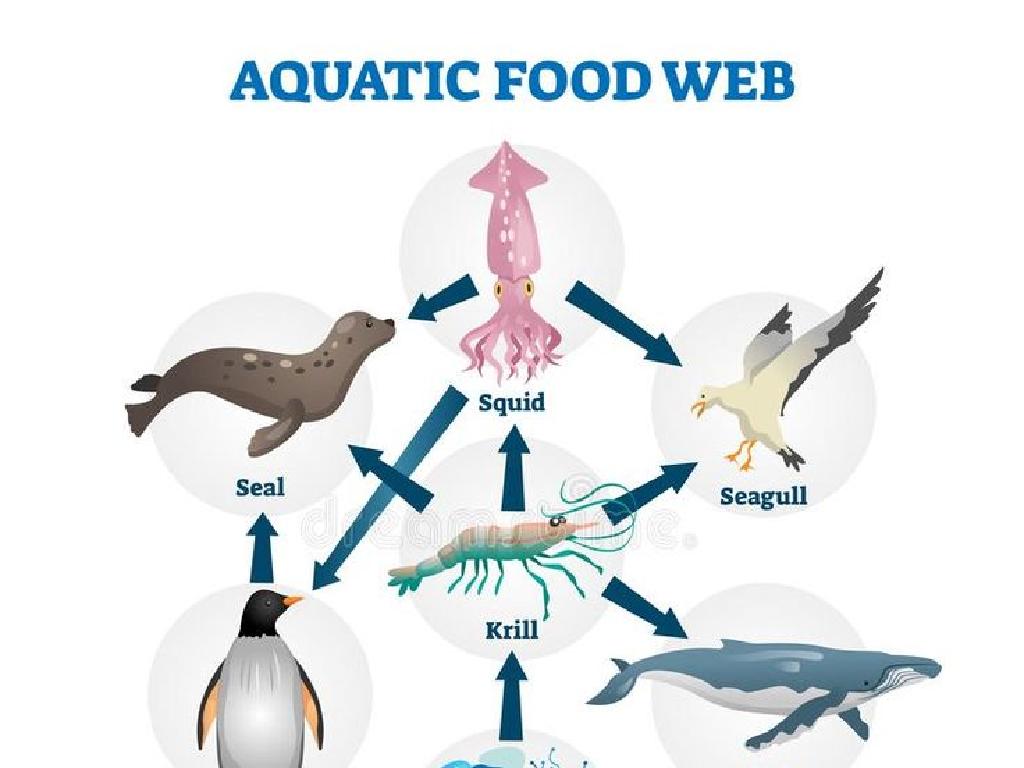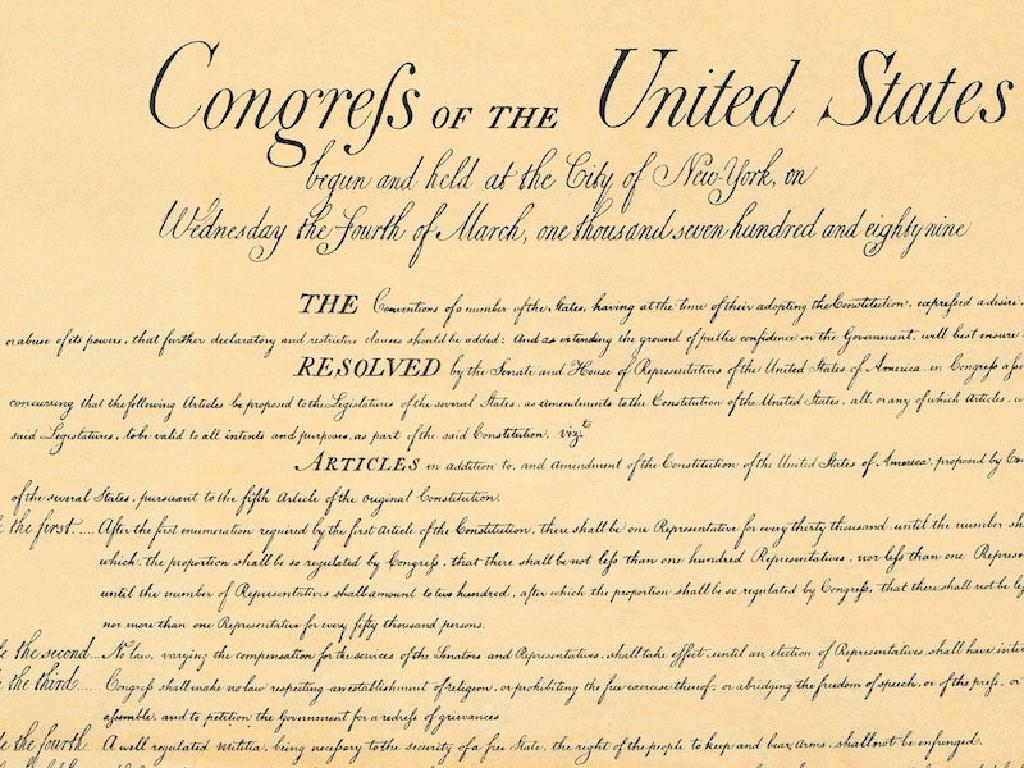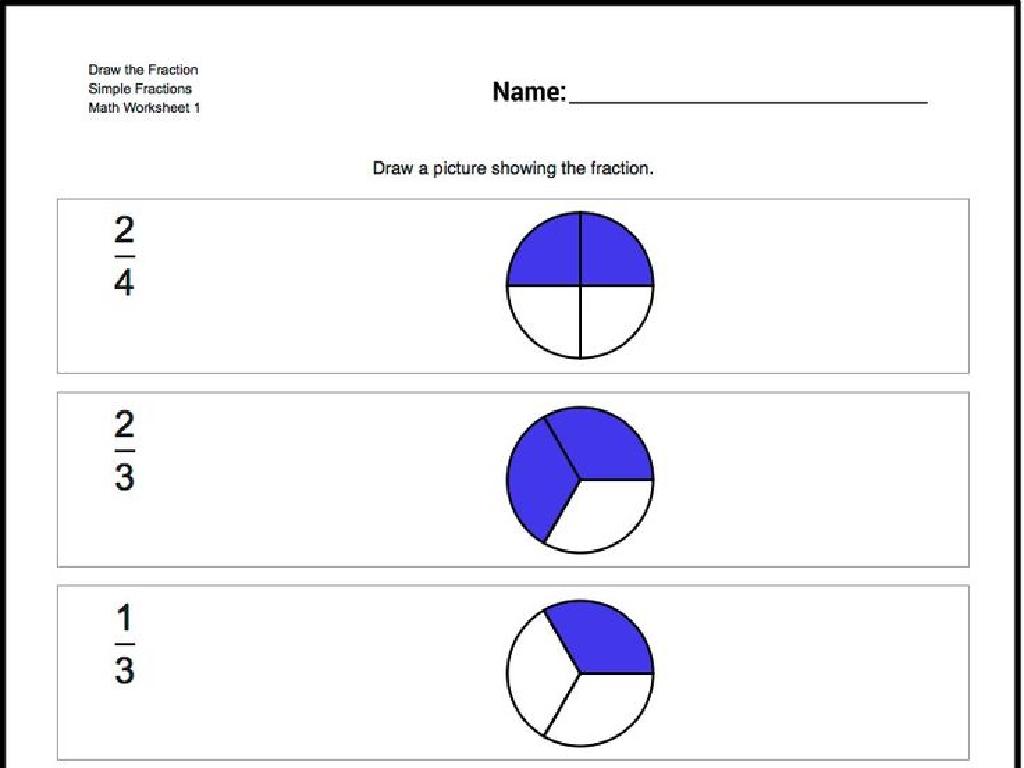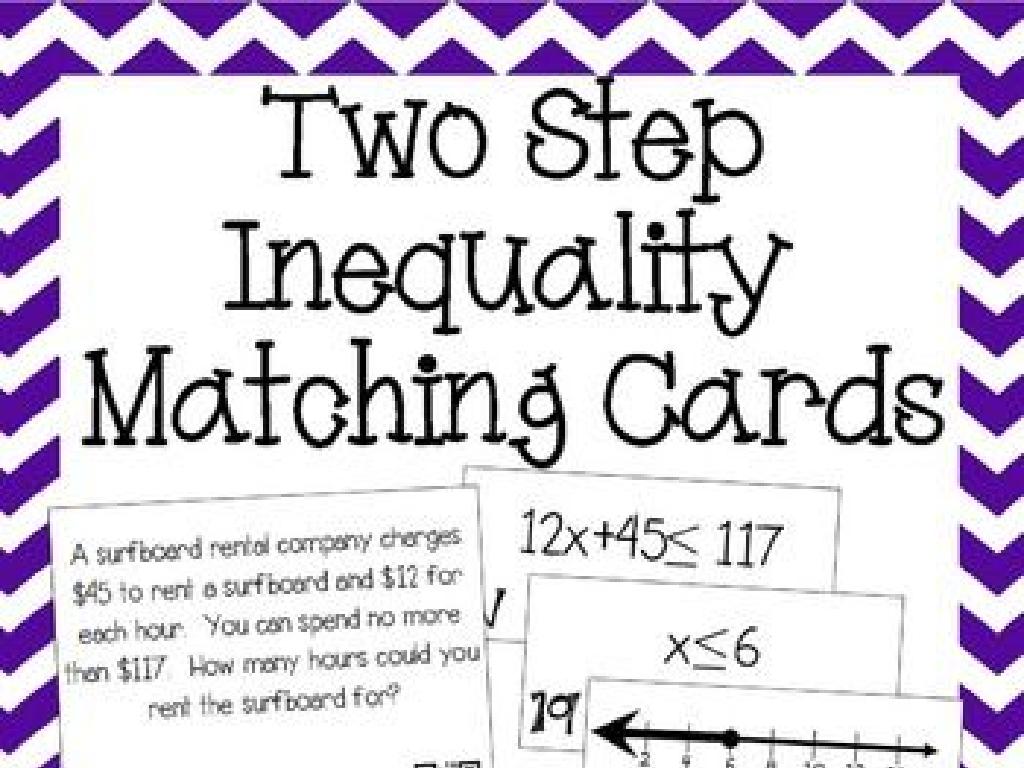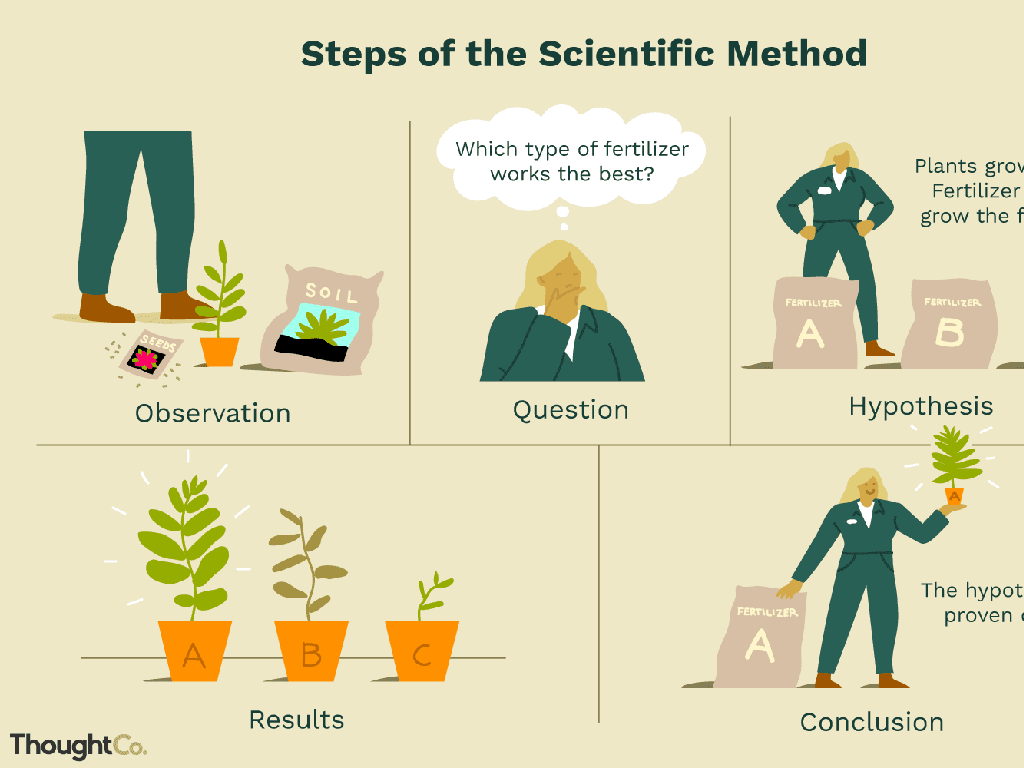Form And Use The Irregular Past Tense: Set 4
Subject: Language arts
Grade: Third grade
Topic: Verb Tense
Please LOG IN to download the presentation. Access is available to registered users only.
View More Content
Welcome to Verb Tenses!
– Understanding verb tenses
– Exploring the past tense
– Past tense verbs tell about actions that have already happened
– Regular vs. irregular verbs
– Regular verbs end in ‘ed’, irregulars have unique forms
– Practice with set 4 irregulars
– Examples: ‘go’ becomes ‘went’, ‘buy’ becomes ‘bought’
|
This slide introduces the concept of verb tenses, focusing on the past tense. It’s crucial to explain that verbs can show when an action happens (past, present, future). Highlight the difference between regular past tense verbs, which typically end in ‘ed’, and irregular past tense verbs, which have unique forms that students need to memorize. Use set 4 of irregular verbs to provide examples and engage the class in identifying the past tense forms. Encourage students to think of actions they did yesterday or last week and to express those using both regular and irregular past tense verbs. Prepare a list of common irregular verbs for practice.
Regular Past Tense Verbs
– Forming Regular Past Tense
– Add ‘-ed’ to most verbs
– Just like ‘jump’ becomes ‘jumped’
– Example: ‘walk’ to ‘walked’
– ‘Look’ changes to ‘looked’ when it’s in the past
– Practice with different verbs
– Find verbs in a story and change them to past tense
|
This slide introduces the concept of regular past tense verb formation to third graders. Start by explaining that to talk about something that happened before now, we often add ‘-ed’ to the end of the verb. Provide clear examples, such as ‘walk’ becoming ‘walked’, and encourage students to come up with their own examples. Use familiar and easy verbs to ensure understanding. In the next class, have a practical activity where students can pick verbs from a story or their own experiences and convert them to the past tense. This will help reinforce the concept and allow them to practice their new skills.
Irregular Past Tense Verbs: Set 4
– Understanding irregular verbs
– Verbs that don’t follow the regular -ed ending
– Irregular verbs don’t follow rules
– ‘go’ changes to ‘went’
– Example: We go to the store, Yesterday, we went to the store
– ‘buy’ changes to ‘bought’
– Example: I buy a toy, Last week, I bought a toy
|
This slide introduces the concept of irregular past tense verbs to third-grade students. Irregular verbs are tricky because they don’t follow the standard rule of adding -ed to form the past tense. Instead, these verbs change in unique ways, and these changes must be memorized. Provide examples like ‘go’ becoming ‘went’ and ‘buy’ becoming ‘bought’ to illustrate the concept. Encourage students to think of actions they do every day and how they would talk about these actions if they happened in the past. This will help them understand the practical use of irregular verbs. Have them practice by using these verbs in sentences to reinforce their learning.
Mastering Irregular Past Tense Verbs
– Memorize irregular verbs
– Some verbs don t follow rules, like ‘go’ becomes ‘went’
– Practice with flashcards
– Use cards with present on one side, past on the other
– Fun memory tricks
– Create a song or story with irregular verbs
– Share your favorite trick
|
This slide is aimed at helping third graders understand and memorize irregular past tense verbs, which do not follow the regular ‘-ed’ ending pattern. Encourage memorization through repetition and practice. Introduce flashcards as a visual and interactive tool to aid in memorization. Suggest fun ways to remember these verbs, such as creating a song, a rhyme, or a story that includes several irregular verbs. Finally, ask students to come up with their own mnemonic or creative idea to share with the class, fostering a collaborative learning environment. Provide examples and guide the students on how to use these methods effectively.
Irregular Past Tense Verbs: Set 4
– Learn with sentence examples
– ‘I saw a movie.’ – ‘saw’ is the past tense of ‘see’
– Grasp the context of usage
– Understanding when and how to use past tense verbs in stories or conversations.
– Create sentences using irregular verbs
– Use new verbs in your own sentences, like ‘go’ becomes ‘went’
– Activity: Find the verb in sentences
|
This slide is aimed at helping third-grade students understand and use irregular past tense verbs through examples and context. Start by showing how verbs change from present to past tense in sentences. Emphasize that these verbs don’t follow a regular pattern and must be memorized. Provide clear examples and ask students to identify the verbs within them. For the activity, prepare sentences with missing verbs and have students fill in the correct form of the irregular past tense verb. This interactive approach will reinforce their learning. Encourage students to think of verbs from their daily life and use them in sentences to describe past events.
Let’s Practice Irregular Past Tense Verbs!
– Interactive sentence creation
– Use Set 4 Irregular Verbs
– Verbs like ‘bring’ change to ‘brought’ in past tense
– Share your sentences aloud
– Learn from classmates’ examples
– Hearing different sentences helps us learn
|
This slide is for an interactive class activity focused on practicing irregular past tense verbs from Set 4. Students will individually create sentences using the provided list of irregular verbs, ensuring they understand the transformation from present to past tense. After crafting their sentences, students will be invited to share with the class, providing an opportunity for public speaking and peer learning. As students share, the teacher should correct any mistakes and highlight good usage examples. Possible activities include sentence relay, where students build a story by each adding a sentence with an irregular verb, or a matching game where students match present tense verbs to their past tense forms.
Class Activity: Verb Charades
– Act out irregular past tense verbs
– Guess the verb and its past tense
– Reinforce learning with fun
– Playing helps remember verb forms better
– Reflect on the activity
– Discuss what helped you guess the verbs
|
This slide introduces a class activity designed to help students learn irregular past tense verbs through a game of charades. Each student will take turns acting out an action without speaking, while the rest of the class tries to guess the verb and its irregular past tense form. This kinesthetic approach to learning caters to different learning styles and makes the lesson memorable. Teachers should prepare a list of irregular verbs for the activity, ensure that all students have a chance to participate, and facilitate a discussion afterwards to reflect on the learning experience. Possible verbs to include are ‘go’ (went), ‘buy’ (bought), ‘teach’ (taught), ‘think’ (thought), etc. The reflection at the end helps students process the activity and reinforces their understanding.
Wrapping Up: Irregular Past Tense
– Review today’s irregular verbs
– Homework: 5 sentences with Set 4 verbs
– Use verbs like ‘go’ became ‘went’, ‘see’ became ‘saw’
– Study for the upcoming quiz
– Practice makes perfect!
– The more you use these verbs, the easier they become!
|
As we conclude today’s lesson on irregular past tense verbs, remind students of the importance of recognizing and correctly using these verbs. For homework, they should craft sentences that incorporate irregular verbs from Set 4, which will help reinforce their understanding. Encourage creativity and context in their sentences. Additionally, inform them about the quiz in the next class to motivate them to review the verbs and practice. Offer some study tips, like flashcards or pairing up with a study buddy, and remind them that regular practice is key to mastering these irregular forms.

